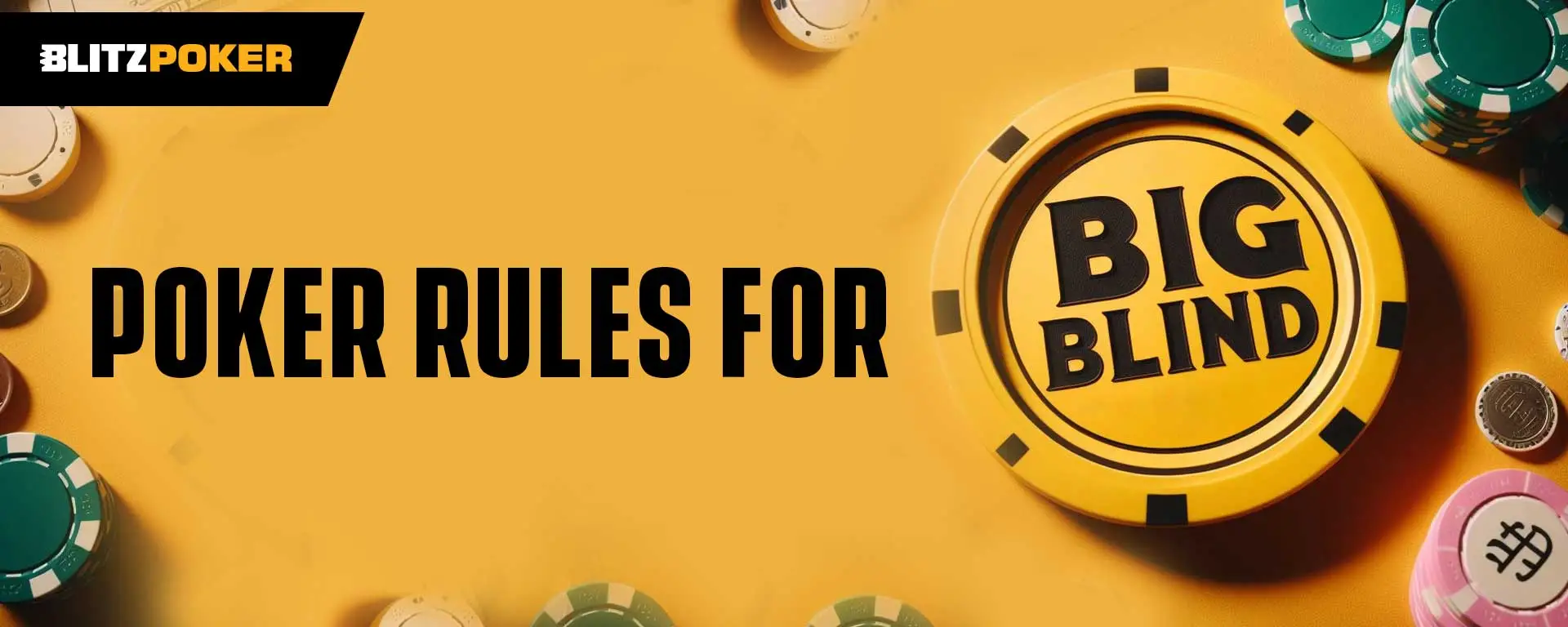Poker Rules for Big Blind
In poker, one player must place a mandatory bet called the big blind in each betting round. This position rotates around the table so every player has to make this bet eventually. The big-blind bet adds excitement to the game. The big blind is usually twice the size of the small blind, but that’s not always the case.
Whether you play in casinos, tournaments, or casual cash games, you need to understand big blinds and other common poker terms and rules. You’ll often hear about big blinds, and there’s a lot to learn about this bet. If you’re playing on BLITZPOKER, grasping the concept of big blinds is essential for mastering the game’s strategy and dynamics. This guide on poker rules for big blind will provide you valuable insights to enhance your gameplay and increase your chances of success.
The Role Big Blind Plays in Poker
Poker games can take a long time without mandatory betting to build up to exciting stakes. Players might be cautious with their bets at first. It can take a few rounds for the pot to grow big enough to catch everyone’s interest and make the game engaging.
Required blind bets, such as the small blind and big blind, add excitement to the game. They make players feel more competitive. When we’ve already risked some money, we all feel a bit more competitive.
Some poker games have other types of mandatory bets like antes. But in two of the most popular poker games — Texas Hold’em and Omaha — big blinds and small blinds are the main ways to increase the pot.
Determining the Big Blind Amount
There are different ways to decide the amount of the big blind. It depends on whether it’s a regular poker game or a tournament. For a single game, the big blind is the table’s minimum bet.
In tournaments, the process is more detailed. Generally, poker tournament organisers set the blind structure based on the tournament’s length and the number of starting chips each player gets. The big blind increases as the tournament goes on. The time frame for each blind level is referred to as the blind period. The first round’s big blind is quite low compared to the final round’s.
Poker Rules for Big Blind
In each round of poker, every player needs to take their turn with the button and meet the required blind obligations. There are different ways to handle this:
- Moving button: The button moves to the next player, and the blinds adjust accordingly. Sometimes, there might be more than one big blind.
- Dead button: The player who should post the big blind does so, and the small blind and button are arranged accordingly. In some cases, the small blind or button may land in front of an empty seat, granting the same player the final move in consecutive hands.
A big blind is a compulsory bet in poker games like Texas Hold ’em, typically used instead of an ante. It’s posted by the player two seats to the left of the dealer button. The player immediately to the left of the button posts the small blind, usually half the size of the big blind.
After each hand, the dealer button moves clockwise around the table, and each player will take turns paying the big blind. If only two players are left, one pays the big blind, and the other pays the small blind.
Blinds are enforced to ensure players have a stake in the game, encouraging them to bet. This prevents situations where players could avoid betting and stall the game.
As the game progresses, the blinds increase to match the growing chip stacks. Adjusting the size of the big blind or the duration between increases helps monitor the game’s pace and stakes.
Typically, big blinds in poker are set at the same amount as the minimum bet, which is a small fraction of the average chip stack. While players have time to accumulate chips, rising blinds eventually force them to play more aggressively.
Is Big Blind Left of Dealer?
In poker, the big blind usually sits to the left of the dealer. It’s a common setup in many types of poker games. Players rotate between being the dealer, small blind, and big blind throughout the game.
Who Pays Big Blind in Poker?
In poker, the player seated two seats away to the left of the dealer button is responsible for paying the big blind.
